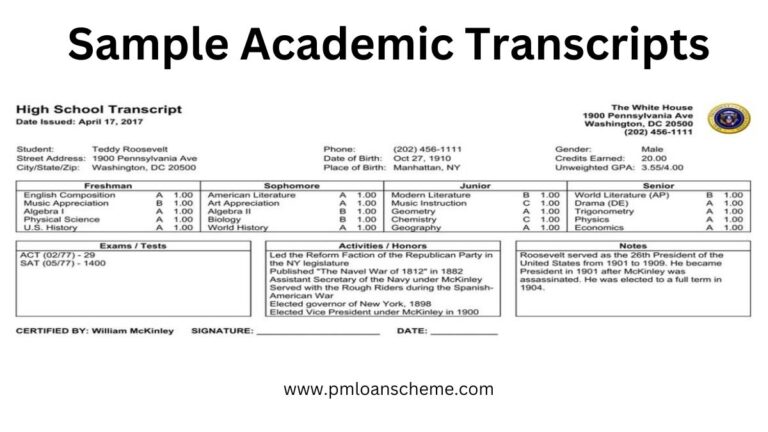Masters from Sweden 2025: Studying in Sweden offers a blend of high-quality education, innovative research opportunities, and a forward-thinking academic culture. With a strong reputation in fields like engineering, technology, environmental studies, and social sciences, Swedish universities are increasingly popular among international students pursuing postgraduate (PG) degrees. This article outlines the structure, eligibility requirements, and application process for master’s courses in Sweden, providing a clear guide for prospective students.
Overview of Swedish Higher Education for Masters
Sweden higher education system is globally recognized for its emphasis on critical thinking, research, and practical application. Postgraduate programs in Sweden typically offer two types of master’s degrees:
- One-Year Master’s Degree – Known as a magisterexamen, this program requires 60 ECTS credits (European Credit Transfer and Accumulation System) and is completed within one academic year.
- Two-Year Master’s Degree – Known as a masterexamen, this program spans 120 ECTS credits and is typically completed over two years. This degree is common in disciplines such as engineering, management, and computer science.
Both degree types encourage active participation, collaboration, and a high level of interaction between students and faculty, which is highly valued in Sweden’s academic environment.

Structure of Masters Programs in Sweden
Swedish master’s programs are usually structured around a combination of coursework, seminars, and project work. The typical structure includes:
- Core Courses and Electives: Students complete both mandatory and elective courses, allowing for a mix of foundational knowledge and specialization in their chosen fields.
- Research and Project Work: Most programs involve independent research projects, often culminating in a thesis or a substantial final project. These projects encourage students to apply theoretical knowledge to real-world scenarios.
- Internships and Industry Projects: In certain fields, particularly technology and engineering, Swedish universities collaborate with industries, providing students with practical exposure through internships or industry-based projects.
Eligibility Requirements for Masters Courses in Sweden
To gain admission to a Swedish university for a masters in Sweden program, candidates must meet both academic and language requirements. While specific criteria may vary based on the course and university, the general eligibility requirements include:
- Academic Qualifications:
- Bachelor’s Degree: A completed undergraduate degree equivalent to a Swedish bachelor’s degree is required.
- Course-Specific Prerequisites: Some programs may require a background in certain fields or subjects, especially in areas like engineering, sciences, and business studies.
- Language Proficiency:
- English Proficiency Tests: Since most master’s programs are taught in English, international students must demonstrate language proficiency through tests like IELTS, TOEFL, or PTE. Most universities expect an IELTS score of 6.5 or higher, or a TOEFL score of at least 90.
- Swedish Language Skills: Though not mandatory for English-taught programs, proficiency in Swedish can be advantageous, particularly if students aim to stay and work in Sweden post-graduation.
- Additional Requirements:
- Statement of Purpose (SOP): Applicants are generally required to submit a personal statement or SOP, explaining their motivation and how the program aligns with their academic and career goals.
- Letters of Recommendation (LORs): Many programs request one or two LORs from previous professors or employers to assess the candidate’s academic and professional capabilities.
- Resume/CV: A well-detailed CV highlighting academic qualifications, work experience, internships, and relevant skills is often required, particularly for management and engineering courses.
Application Process for Masters Programs in Sweden
Sweden has a centralized application system that simplifies the application process for international students. Here’s a step-by-step guide to applying for a master’s degree in Sweden:
- Research Programs and Universities: Sweden is home to several top-ranked universities such as Lund University, Uppsala University, and KTH Royal Institute of Technology. Prospective students should research programs, faculty, course structure, and university rankings to find a suitable match.
- Application Deadlines:
- Autumn Intake: The primary intake for most master’s programs is in the autumn, with applications typically opening in mid-October. The application deadline is generally in mid-January for the following autumn.
- Spring Intake: Some programs offer a spring intake, with deadlines usually in mid-August of the preceding year.
- Submit Application via University Admissions:
- Centralized Portal: Applications for Swedish universities are processed through a centralized platform, University Admissions. This system allows students to apply to multiple programs at different universities through a single application.
- Application Fee: Non-EU/EEA students are required to pay an application fee, usually around SEK 900 (approximately €85).
- Uploading Documents: Students need to upload all required documents, including transcripts, degree certificates, language proficiency test scores, SOP, LORs, and CV.
- Paying Tuition Fees (for Non-EU/EEA Students):
- Tuition Fees: Non-EU/EEA students are required to pay tuition fees, which vary by university and program. Annual fees typically range from SEK 80,000 to SEK 200,000, depending on the program.
- Scholarships: Many Swedish universities offer scholarships to international students based on academic merit. Government-funded scholarships such as the Swedish Institute Scholarships are also available for students from select countries.
- Visa and Residence Permit Application:
- Residence Permit: International students from outside the EU/EEA must apply for a residence permit to study in Sweden. Applications are submitted online via the Swedish Migration Agency’s website.
- Financial Proof: To qualify for a residence permit, students need to show proof of funds to cover their living expenses, which is approximately SEK 8,730 per month for the duration of their studies.
- Prepare for Arrival:
- Accommodation: Many universities assist international students with housing, but it’s recommended to apply early due to limited availability.
- Insurance: Non-EU/EEA students need comprehensive health insurance, which may be provided by the university or purchased independently.
Why Choose Sweden for a Master’s Degree?
Sweden’s education system is student-centric, emphasizing independence and innovation. With access to cutting-edge research, sustainable practices, and strong industry connections, Sweden provides a vibrant academic environment. Additionally, the Swedish lifestyle, known for high standards of living, cultural diversity, and work-life balance, is an added benefit for international students.
Conclusion
A master’s degree from Sweden equips students with advanced knowledge, practical skills, and global exposure, making them highly employable across various sectors. The application process may seem detailed, but by following these structured steps, prospective students can successfully navigate their journey to Swedish higher education. From selecting a program to arriving in Sweden, planning ahead and preparing thoroughly are essential steps for any international student aspiring to study in Sweden.
FAQ: Pursuing a Master’s Degree in Sweden
What are the types of master’s degrees offered in Sweden?
One-Year Master’s (Magisterexamen): Requires 60 ECTS credits, typically completed in one year.
Two-Year Master’s (Masterexamen): Requires 120 ECTS credits and is usually completed over two years.
What are the key eligibility requirements for a master’s program in Sweden?
A bachelor’s degree equivalent to a Swedish undergraduate degree.
English language proficiency (IELTS, TOEFL, or PTE), with most universities requiring an IELTS score of 6.5 or a TOEFL score of 90.
Course-specific prerequisites for certain programs, like engineering or business, which may require prior coursework in related subjects.
Do I need to know Swedish to study a master’s program in Sweden?
No, most master’s programs are taught in English, so Swedish is not required. However, learning basic Swedish can be beneficial for daily life and work opportunities if you plan to stay in Sweden post-graduation.
What documents are required for my application?
Academic transcripts and degree certificates
English language proficiency scores (IELTS, TOEFL, PTE)
Statement of Purpose (SOP) explaining your motivation for applying
Letters of Recommendation (LORs) from professors or employers
Resume/CV detailing academic qualifications, work experience, and skills
What is the application process for a master’s program in Sweden?
Applications are submitted through University Admissions, Sweden’s centralized application portal., After choosing programs, upload required documents, pay the application fee (SEK 900 for non-EU/EEA students), and submit the application.
When are the application deadlines?
Autumn intake (primary): Applications open mid-October and close in mid-January.
Spring intake (limited): Deadlines typically fall in mid-August of the preceding year.
Are there any application fees?
Yes, non-EU/EEA students must pay an application fee of SEK 900 (about €85).
Do I have to pay tuition fees in Sweden?
Non-EU/EEA students are required to pay tuition fees, which vary based on the program, typically ranging from SEK 80,000 to SEK 200,000 annually.
EU/EEA students are exempt from tuition fees.


